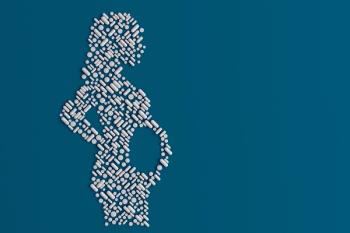
- Vol 42, Issue 7
What Long COVID Can Teach Psychiatry—and Its Critics
Key Takeaways
- Long COVID lacks definitive diagnostic criteria, biomarkers, and established treatments, similar to many psychiatric disorders.
- The NASEM report emphasizes the reality and severity of long COVID, despite diagnostic uncertainties.
Long COVID presents complex symptoms without clear diagnostic criteria, challenging traditional medical understanding and emphasizing the need for compassionate care.
CLINICAL REFLECTIONS
Let’s say you have been coping with a multiform and mysterious set of physical, emotional, and cognitive symptoms for the past 6 months. You feel miserable and can barely carry out the activities of daily living. You have seen several medical specialists, but none is able to give you a definitive diagnosis. Laboratory and imaging studies have been normal or inconclusive. Finally, one doctor presents you with a diagnosis. You are relieved at first, until you research the condition and discover that there are no universally agreed upon, nonsubjective diagnostic criteria; no clear demarcation of this malady from several others with similar signs and symptoms; no single definitive biological test or reliable biomarkers for the condition; and no widely accepted and validated treatments for it. Understandably, your heart sinks, and you begin to wonder whether this diagnosis points to any kind of real disease at all.
Am I describing a psychiatric diagnosis—perhaps a somatic symptom disorder? Like the latter, most psychiatric diagnoses share the characteristics previously described. This has led many of psychiatry’s critics to argue that psychiatrists do not treat real diseases, or that psychiatric disorders “…cannot legitimately be categorized as diseases.”1
To be sure, it is likely that only about 2 dozen DSM-5 disorders fully or partially meet the famous 5 phases criteria devised by psychiatrists Eli Robins, MD, and Samuel Guze, MD, in their classic 1970 paper2 —though this does not necessarily mean that all other DSM diagnoses are perforce invalid, not real, or unscientific.3
Essentially, the 5 phases entail clinical description, laboratory study, exclusion of other disorders, follow-up study, and family study.2 Robins and Guze were arguably the first to articulate the elements of construct validity in psychiatry. Other authors have added more potential validators, such as treatment response and diagnostic consistency over time.4-6
Introducing the Definition of Long COVID
It may come as no surprise that the brief, skeletal vignette at the beginning of this article was not alluding to a known psychiatric disorder at all. I was describing the condition that has come to be known as long COVID. This diagnosis, for the most part, has fallen into the hands of internists, rheumatologists, infectious disease experts, and other nonpsychiatric physicians. Suffice it to say that long COVID as now conceived does not get within a country mile of the Robins-Guze criteria. A recent comprehensive review of long COVID by the National Academies of Sciences, Engineering, and Medicine (NASEM) concluded the following7:
“Long COVID manifests in multiple ways. A complete enumeration of possible signs, symptoms, and diagnosable conditions of long COVID would have hundreds of entries.… Long COVID can be diagnosed on clinical grounds. No biomarker currently available demonstrates conclusively the presence of long COVID.… [Nevertheless]…the committee applied the term ‘disease state’ to emphasize the reality and potential severity of the condition. We learned from patients’ reported interactions with physicians and other health care professionals that such terms as ‘syndrome’ may connote an amorphous ailment that will be dismissed as not having a physical basis.”
Finally, it is notable that the NASEM definition of long COVID does not require proof of previous acute symptomatic or asymptomatic SARS-CoV-2 infection.
Suffering and Incapacity: The Keys to Disease
The NASEM review noted, “Long COVID can impair affected patients’ ability to work, attend school, and care for themselves and can have a profound emotional and physical effect on patients, families, and caregivers.”7
Indeed, to the NASEM committee’s credit, their report included graphic narratives from actual patients with long COVID, one of whom stated, “Fundamentally, long COVID took away my life. I am unable to do the things that define me and that give me pleasure. I am unable to travel to see my family and friends. I feel imprisoned and in exile.”
Another sufferer put it this way: “My long Covid life remains terrifying. Last weekend I washed my car, dried it, put it back in the garage. Then I got violently sick and could hardly get up to get food. I was unable to read or even call my mom. I’m a shell of myself. But my physical issues aren’t half as bad as my brain problems. It’s hard to describe. You can say brain fog, but that doesn’t come close to doing it justice.”
What Family Practice Teaches Us About Diagnosis
How often do physicians outside of psychiatry confront puzzling clinical conditions with fuzzy boundaries, no clear pathophysiology, no dispositive lab tests, no validated biomarkers, and no established treatments—conditions like long COVID? The answer turns out to be quite often. But this does not mean that physicians have nothing to offer patients with such presentations. It is useful here to consider the pragmatic perspective of family practice medicine, which, in many ways, confronts some of the same uncertainties we encounter in psychiatry. As professor of family medicine Kirsti Malterud, MD, PhD, has observed8:
“[C]onsultations…in family medicine frequently include diagnostic reasoning with no clear-cut answer. The clinical scene does not always immediately present a diagnosis with the capacity to explain illness. Furthermore, patients with the same diagnosis differ unpredictably.… Although scientific and technological advances refine clinical problems and provide solutions, physicians still work in situations of inescapable uncertainty.…”
“Yet family physicians have realized that the art of medicine is the ability to be effective with scientifically inadequate data, and that the solution of the patient’s problem can often be achieved despite the impossibility of reaching an established medical diagnosis. The uncertainty demands that the physician is able to put up with provisional conclusions.… The professional norm that objective signs are supposed to confirm subjective symptoms and thereby reveal mono-causal disease processes falls apart in the sea of medical complexities encountered by the family physician.… Research from family medicine confirms that the diagnostic process is a fundamentally narrative practice, drawing first and foremost on the patient’s story; taking the appropriate steps to exclude serious disease; then establishing rational shortcuts…leading to action.”
Implications of Long COVID for Psychiatric Diagnosis and Diseases
I draw the following broad conclusions from the NASEM report:
- Psychiatry is not alone in struggling with complex clinical presentations whose recognition and diagnosis are based primarily (though not entirely) on the patient’s reported symptoms and life experience. As Malterud has noted, this situation arises frequently in family medicine.
- A clinical condition does not need to meet all 5 Robins and Guze criteria of construct validity—or any of them, for that matter—to be worthy of medical care and treatment (though the RG criteria are certainly valuable as ideal standards). Falling short of the full RG criteria does not automatically place the patient’s condition outside the realm of clinical medicine or the medical model, properly understood.9
- The NASEM report makes clear that a clinical condition does not need to have an established pathophysiology or validated biomarker to count as a bona fide disease state—and not dismissed as a mere syndrome. A disease state like long COVID is most certainly real, even though we cannot yet trace its origin to a specific causal or pathophysiological process. The same may be said for serious psychiatric disease states, like schizophrenia or autism. Furthermore, disease state is a much more useful designation than the nebulous term disorder.
- A disease state may be recognized and sufficiently established by the identification of substantial or prolonged suffering and incapacity, not owing to an obvious external cause, such as physical abuse, extreme poverty, a visible wound, etc. When such suffering and incapacity are sufficiently present in the cognitive, emotive, or behavioral realm, it is proper to speak of a psychiatric disease state.
This last point reminds us of a maxim attributed to Hippocrates: “If sick men fared just as well eating and drinking and living exactly as healthy men do…there would be little need for the science [of medicine].”10
Author's note: While I draw some comparisons between diagnosing Long Covid and diagnosing some psychiatric disorders, nothing in my article should be construed as implying thatLong Covid is a "psychiatric disorder". Whatever the exact nature of Long Covid, it clearly has numerous physical and biological manifestations and is a very "real" disease state.
Dr Pies is professor emeritus of psychiatry and lecturer on bioethics and humanities, SUNY Upstate Medical University; clinical professor of psychiatry, Tufts University School of Medicine; and editor in chief emeritus of Psychiatric Times (2007-2010). Dr Pies is the author of several books, including several textbooks on psychopharmacology. A collection of his works can be found on
References
1. Benning TB.
2. Robins E, Guze SB.
3. Knoll JL IV. Why DSM-III, IV, and 5 are unscientific. Psychiatric Times. October 14, 2013.
4. Kendell RE.
5. Kendler KS.
6. Aboraya A, France C, Young J, et al.
7. Ely EW, Brown LM, Fineberg HV; National Academies of Sciences, Engineering, and Medicine Committee on Examining the Working Definition for Long Covid.
8. Malterud K.
9. Pies RW.
10. Pies RW.
Articles in this issue
5 months ago
Successfully Prescribing MAOIs for Depression5 months ago
The Hotseat...Newsletter
Receive trusted psychiatric news, expert analysis, and clinical insights — subscribe today to support your practice and your patients.













